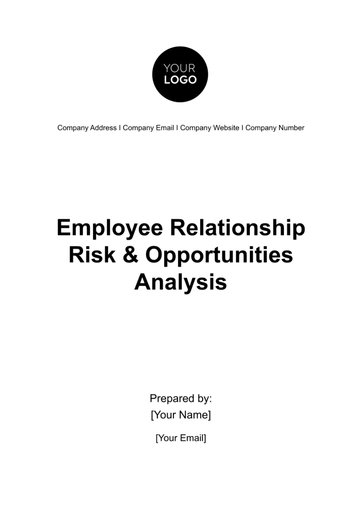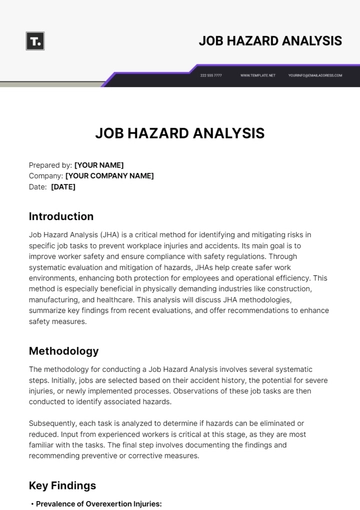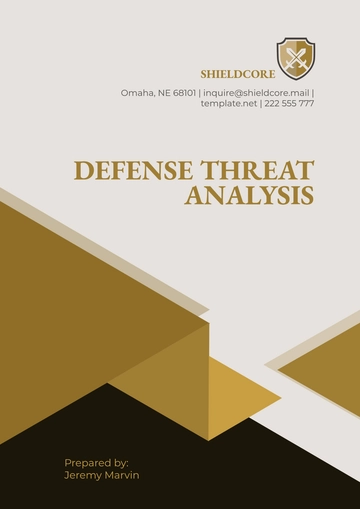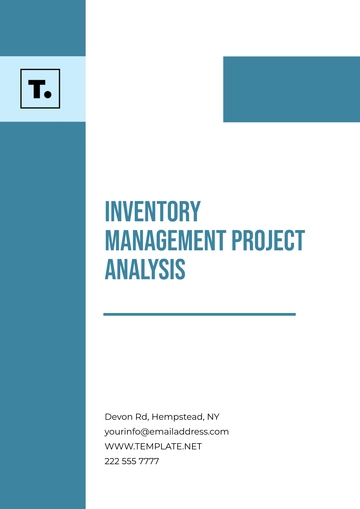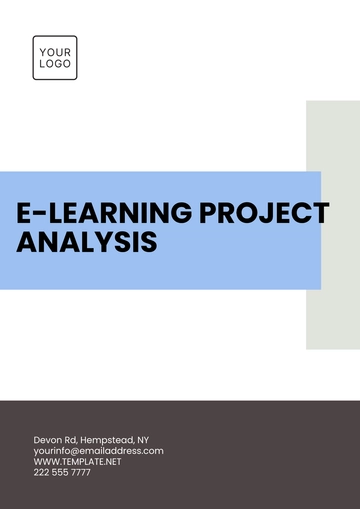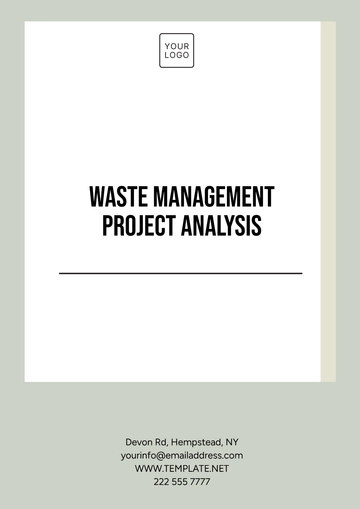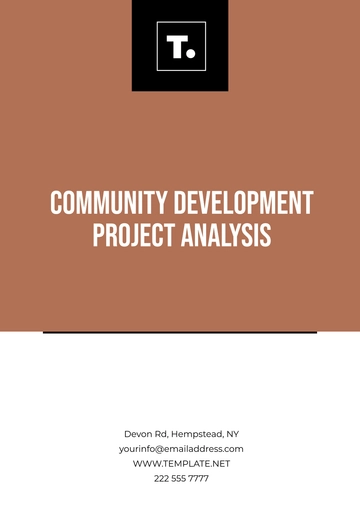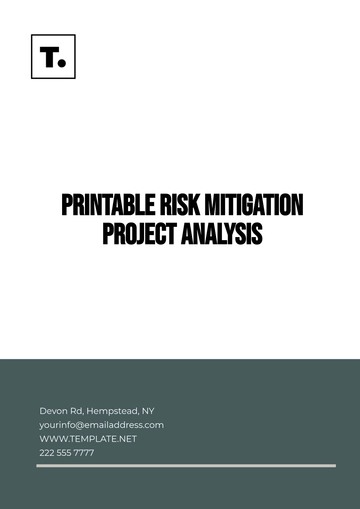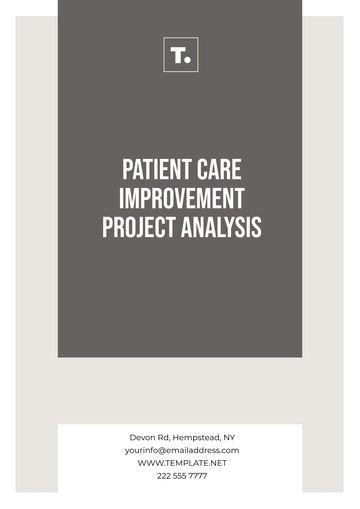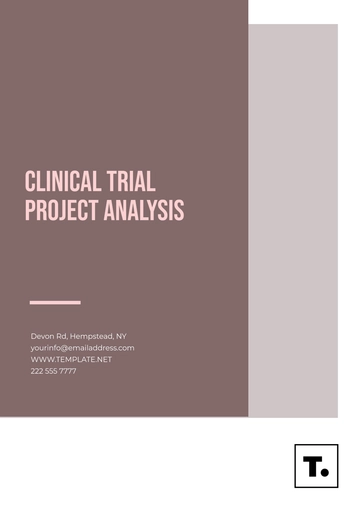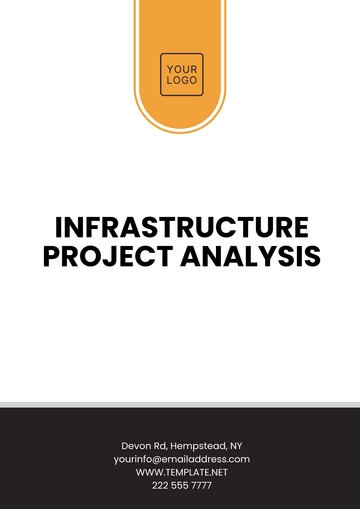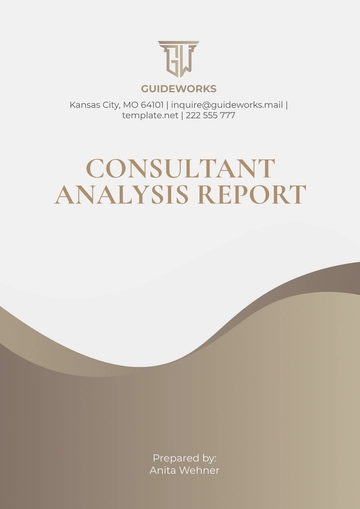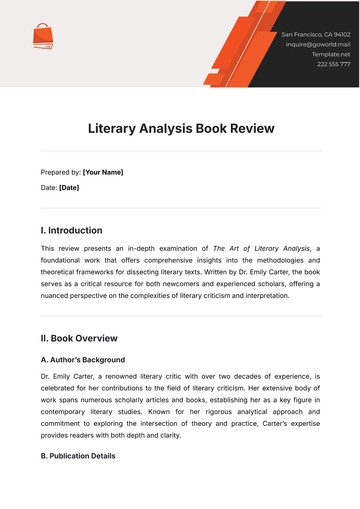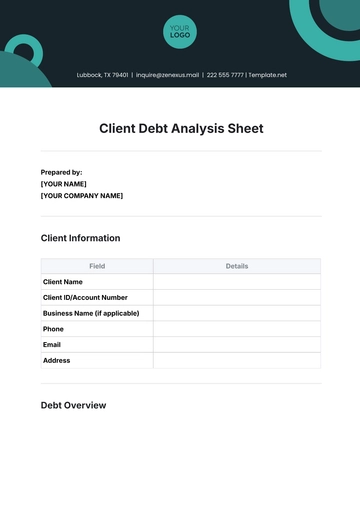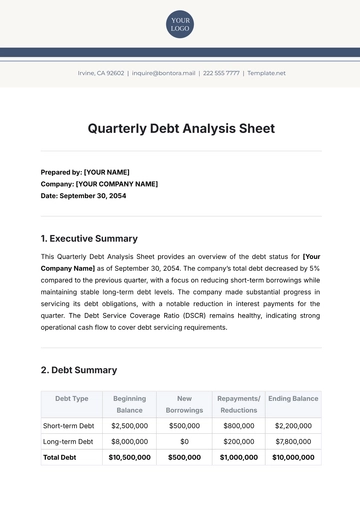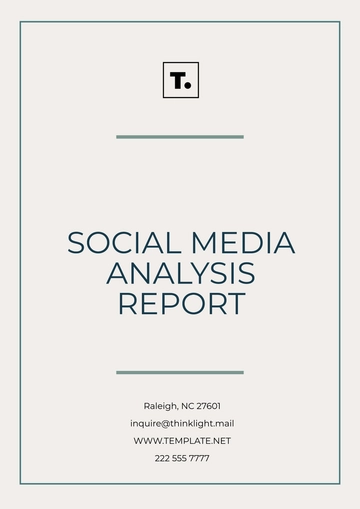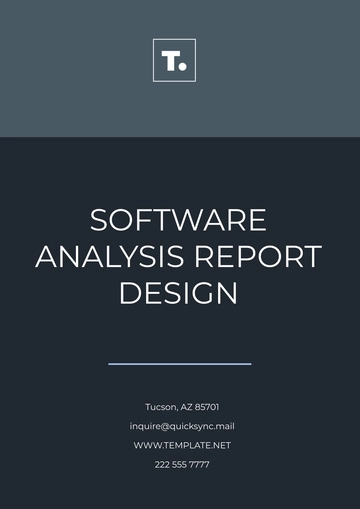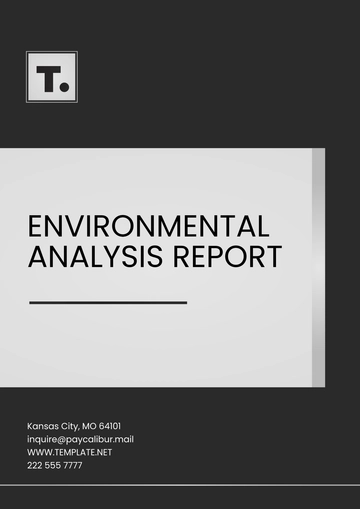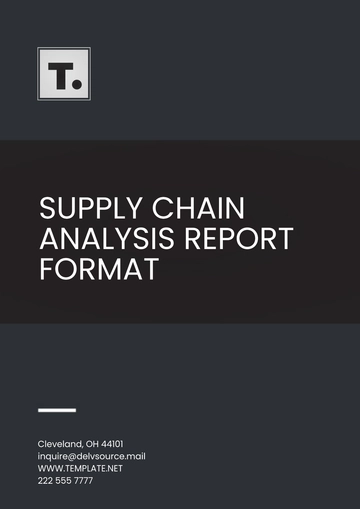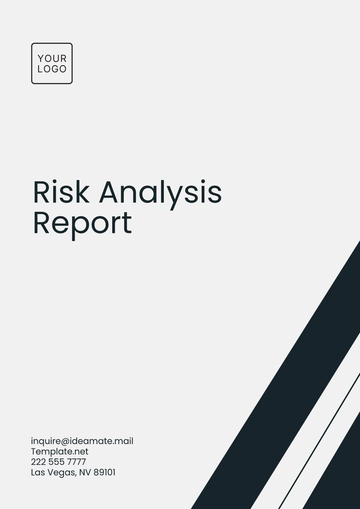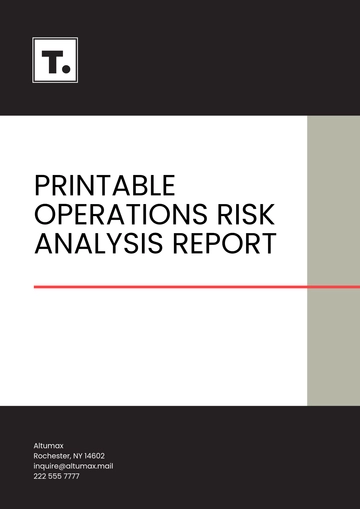Free Consulting Firm Risk Analysis

1. Introduction
In the highly competitive world of consulting, firms like [Your Company Name] are faced with a variety of risks that can significantly impact their ability to operate effectively, retain clients, and maintain profitability. Understanding and managing these risks is essential to the firm’s long-term success and sustainability. As the business environment continues to evolve in the years leading to 2050, the challenges faced by consulting firms will become increasingly complex and interconnected. Therefore, a comprehensive risk analysis, involving both identification and strategic mitigation of potential risks, is crucial for ensuring that the firm can adapt to future challenges and capitalize on emerging opportunities.
This risk analysis will detail the types of risks that [Your Company Name] may face, categorize them based on their potential severity and probability, and propose strategies for minimizing or managing these risks. The analysis encompasses various domains of risk, from financial and operational to cybersecurity, regulatory, and reputational concerns. Furthermore, the report will outline the methodologies used in assessing these risks and recommend mitigation measures designed to protect both the firm and its stakeholders.
2. Risk Identification
The identification of risks is the cornerstone of any risk management strategy. By pinpointing the specific risks that could threaten the firm’s operations, leadership can prioritize which areas require immediate attention and which can be monitored over time. Below is a comprehensive breakdown of the primary risk categories that [Your Company Name] must consider.
2.1 Financial Risks
Financial risks are inherent to any business, but for consulting firms, they can be particularly pronounced due to fluctuating demand, project-based revenue, and dependency on key clients. Understanding and managing these risks ensures that the firm remains solvent and profitable.
2.1.1 Market Volatility
Market volatility refers to the unpredictable nature of economic and financial markets that can affect a consulting firm’s ability to forecast and maintain steady revenues. Economic downturns, changes in industry regulations, and shifts in market demand for consulting services can lead to reduced project volumes, delayed payments, or contract cancellations. This can place pressure on [Your Company Name] to manage cash flow effectively and find new business opportunities.
A recession, for instance, could result in a downturn in client budgets for consulting services, leading to fewer projects or increased competition for available contracts. Moreover, changes in commodity prices, stock market performance, or currency exchange rates can have a profound impact on firms working in global markets. [Your Company Name] should closely monitor macroeconomic indicators and diversify its client base to mitigate the financial risks associated with market volatility.
2.1.2 Cash Flow Management
Cash flow is the lifeblood of any business, and mismanagement can lead to severe consequences. Cash flow issues can arise when clients delay payments or when the firm has a large amount of accounts receivable tied up in long-term contracts. For consulting firms, revenue is often linked to the completion of specific project milestones or billable hours, and delays in these processes can create financial pressure.
For example, if a project extends beyond its expected timeline or if there are disputes over deliverables, payments could be delayed or reduced, leaving the firm with insufficient funds to meet its operational needs. [Your Company Name] can mitigate cash flow risks by establishing clearer payment terms with clients, improving the accuracy of project timelines, and maintaining a reserve fund to cover short-term expenses.
2.1.3 Financial Mismanagement
Financial mismanagement is another significant risk for consulting firms. This can occur in several ways, such as improper budgeting, inaccurate financial forecasting, and ineffective use of financial resources. Without adequate financial controls, [Your Company Name] may overspend on unnecessary expenses or misallocate funds, reducing profitability.
Maintaining proper financial systems and regular audits is essential for ensuring the accuracy and integrity of financial records. Moreover, developing a transparent financial reporting process will allow leadership to spot potential issues early and adjust accordingly.
2.2 Operational Risks
Operational risks emerge from the daily activities and processes within the firm. These risks can have a direct impact on the firm's ability to deliver services on time, maintain client satisfaction, and effectively manage resources.
2.2.1 Employee Turnover
Employee turnover is a significant operational risk that can disrupt business continuity. Consulting firms rely heavily on the expertise and experience of their consultants, and losing high-performing staff can lead to delays in project delivery, increased recruitment costs, and decreased morale. For [Your Company Name], ensuring that employees remain satisfied and engaged is critical to minimizing turnover.
High turnover can also result in knowledge gaps and the loss of institutional memory, which can impair the firm’s ability to deliver high-quality service to clients. To address this, [Your Company Name] can implement retention strategies such as offering competitive compensation packages, career development opportunities, and a positive organizational culture. Additionally, conducting regular employee satisfaction surveys can help pinpoint areas of concern and prevent potential turnover before it happens.
2.2.2 Project Delays and Failures
Consulting firms often face the risk of project delays, which can result in financial penalties, client dissatisfaction, and damage to the firm’s reputation. Delays typically occur due to poor project management, unrealistic timelines, or unexpected changes in client requirements. As consulting firms are typically hired to deliver specialized knowledge, clients expect high levels of expertise and on-time delivery.
To mitigate this risk, [Your Company Name] must ensure that project managers follow proven methodologies, such as Agile or Waterfall, depending on the nature of the project. Furthermore, regular project reviews, open communication channels with clients, and proactive risk identification can help reduce the chances of delays and ensure that projects are completed within the agreed timelines.
2.2.3 Inadequate Technology and Infrastructure
The reliance on technology in today’s consulting environment is greater than ever. Firms must ensure that their IT infrastructure is secure, up-to-date, and capable of supporting critical business operations. Outdated technology can result in inefficiencies, data losses, and delays in project delivery.
[Your Company Name] can reduce the risk of technological shortcomings by regularly upgrading its software and hardware systems and ensuring that IT support is available around the clock. Additionally, staff should be trained on best practices in utilizing the firm’s technological tools, and data backups should be performed regularly to avoid losses in case of system failure.
2.3 Cybersecurity Risks
As consulting firms store vast amounts of sensitive data, cybersecurity is a critical concern. Cyberattacks can lead to data breaches, financial losses, and reputational damage. The rise of digital transformation in the consulting industry makes firms vulnerable to various forms of cyber threats, such as phishing, ransomware, and hacking.
2.3.1 Data Breaches
A data breach occurs when sensitive information, such as client data or proprietary research, is accessed by unauthorized individuals. This can result in a loss of client trust, legal ramifications, and regulatory fines. Consulting firms must employ robust cybersecurity protocols to safeguard this valuable information.
To address data breach risks, [Your Company Name] should implement strong encryption, multi-factor authentication, and other cybersecurity measures. Regular cybersecurity training for employees and periodic vulnerability assessments are essential to detecting and eliminating potential threats.
2.3.2 Ransomware and Cyberattacks
Ransomware attacks are becoming increasingly common, where cybercriminals lock access to the firm's data until a ransom is paid. A successful ransomware attack can cause significant disruption, rendering critical business data inaccessible and affecting project delivery.
To mitigate these risks, [Your Company Name] should develop a comprehensive incident response plan, including regular system backups and disaster recovery strategies. Additionally, firm-wide cybersecurity awareness training and continuous monitoring of the firm’s digital assets can help prevent such attacks.
2.4 Regulatory and Legal Risks
Consulting firms must operate within a complex landscape of local, national, and international regulations. Non-compliance with these regulations can result in hefty fines, reputational damage, and potential lawsuits. Legal risks also include disputes with clients, failure to meet contractual obligations, and intellectual property theft.
2.4.1 Non-compliance with Industry Regulations
Failing to comply with regulations can have far-reaching consequences for consulting firms. For instance, violating data privacy laws such as the General Data Protection Regulation (GDPR) can result in substantial fines and loss of client trust. Additionally, firms must comply with industry-specific regulations, such as financial or healthcare standards.
[Your Company Name] must stay updated on regulatory changes, invest in compliance programs, and ensure that all employees are well-versed in the relevant laws. Having a compliance officer or team in place can help monitor legal requirements and ensure that the firm is always in compliance with applicable regulations.
2.4.2 Contractual Disputes
Consulting firms may encounter legal risks arising from contractual disputes. These disputes can stem from disagreements over terms, services rendered, or payment schedules. In such cases, legal fees, lost time, and potentially strained relationships with clients can result in significant losses.
To mitigate this risk, [Your Company Name] should ensure that all contracts are clearly defined and legally reviewed. Contract terms should be transparent and understood by both parties, and disputes should be handled through effective communication or alternative dispute resolution methods, such as mediation.
2.5 Reputational Risks
The reputation of a consulting firm is one of its most valuable assets. Negative publicity, poor client satisfaction, or ethical lapses can cause long-lasting damage to a firm’s image. This, in turn, can affect client retention, employee morale, and business growth.
2.5.1 Negative Publicity
In the age of social media, negative publicity can spread quickly and affect a firm’s reputation. A poorly handled incident or customer complaint can escalate rapidly, leading to significant damage. For [Your Company Name], maintaining a positive public image is vital to sustaining client relationships and attracting new business.
A strong public relations strategy and a responsive crisis management team are essential in minimizing the impact of negative publicity. Addressing complaints promptly and transparently, as well as leveraging positive client testimonials, can help protect the firm's reputation.
3. Risk Assessment Methodology
In assessing the risks identified above, [Your Company Name] must utilize a structured risk assessment methodology that considers both the likelihood and potential impact of each risk. This process helps prioritize risks, determine mitigation strategies, and allocate resources effectively.
3.1 Likelihood and Impact Matrix
To evaluate the risks, a likelihood and impact matrix is often used, categorizing risks based on their probability of occurrence and the severity of their potential consequences. The matrix helps [Your Company Name] identify which risks should be addressed immediately and which ones can be monitored for further action.
Risk Category | Likelihood | Impact | Priority |
|---|---|---|---|
Market Volatility | High | High | Critical |
3.2 Quantitative and Qualitative Risk Evaluation
Quantitative and qualitative methods can be used to further assess risks. Quantitative evaluation involves calculating potential financial losses, while qualitative evaluation includes considering factors like brand reputation and client relationships.
For example, the potential financial loss from a data breach could be quantified based on fines, recovery costs, and lost business. On the other hand, reputational damage may be evaluated qualitatively by assessing the impact on client trust and future contracts.
4. Risk Mitigation Strategies
Once risks are identified and assessed, the next step is developing mitigation strategies. Effective risk mitigation can help reduce the likelihood of risk occurrence and minimize its impact if it does occur.
4.1 Financial Risk Mitigation
To address financial risks such as market volatility, [Your Company Name] can consider diversifying its revenue sources, securing long-term contracts with clients, and maintaining sufficient reserves to weather economic downturns. By establishing clear financial policies and regular monitoring, the firm can protect its financial stability even in uncertain times.
4.2 Operational Risk Mitigation
Operational risks can be mitigated by ensuring that [Your Company Name] has strong project management processes in place. This includes regularly reviewing project progress, managing client expectations, and having contingency plans for potential delays. Investing in employee retention and providing professional development opportunities can also help reduce the impact of turnover.
4.3 Cybersecurity Risk Mitigation
Investing in the latest cybersecurity technologies, such as AI-driven threat detection systems, encryption, and multi-factor authentication, is essential to safeguard sensitive data. Conducting regular penetration tests and security audits ensures that [Your Company Name] remains one step ahead of potential cyber threats. Developing a disaster recovery plan and incident response strategies will also help mitigate the effects of a cyberattack.
4.4 Legal and Regulatory Risk Mitigation
Regular training on compliance and industry-specific regulations is critical to reduce the risk of non-compliance. Having legal experts on staff or working with external legal advisors will also ensure that contracts are clearly defined and disputes are minimized.
4.5 Reputational Risk Mitigation
Maintaining transparency, managing public relations proactively, and offering exceptional customer service are key strategies for protecting [Your Company Name]'s reputation. Developing a crisis communication plan that is regularly updated and rehearsed ensures that the firm is prepared for any potential PR issues.
5. Monitoring and Review of Risk Management Strategies
Risk management is not a one-time activity, but an ongoing process that requires constant monitoring and periodic review. As the business environment, industry standards, and regulatory frameworks evolve, [Your Company Name] must continuously adapt its risk management strategies to address new threats and opportunities.
5.1 Continuous Risk Monitoring
The key to effective risk management lies in the ability to track and assess risks on an ongoing basis. By monitoring internal and external factors, [Your Company Name] can anticipate potential risks and take action before they escalate. Continuous monitoring involves assessing risks in real time and updating risk management plans accordingly.
One of the primary ways to monitor risks is through regular meetings and reviews. These should involve stakeholders from various departments (e.g., finance, IT, legal, and human resources) who can provide insights into emerging risks within their respective areas. Technology also plays a significant role in monitoring risks, with data analytics tools and business intelligence software offering real-time insights into potential issues such as financial anomalies or security breaches.
5.2 Periodic Risk Reviews
In addition to continuous monitoring, periodic risk reviews should be conducted to evaluate the effectiveness of the firm’s risk management strategies. This process involves revisiting the risk analysis at scheduled intervals (e.g., annually or biannually) to assess whether previously identified risks have been effectively mitigated, if new risks have emerged, and if the firm’s risk management strategies are still appropriate.
During these reviews, the risk management team should assess the success of risk mitigation efforts. For instance, if the firm has implemented a new cybersecurity strategy, the team should evaluate how well it has performed in terms of reducing the frequency or severity of data breaches. Similarly, if a financial management system has been introduced to mitigate cash flow issues, its success should be assessed based on improved financial stability.
5.3 Adapting to New Risks and Emerging Trends
The risk landscape is continuously evolving, particularly as the global economy, technology, and regulations change. [Your Company Name] must stay agile and adaptable to ensure that it can respond to emerging risks, whether from disruptive technologies, geopolitical instability, or unforeseen events like pandemics.
To stay ahead of new risks, [Your Company Name] should maintain a proactive approach by investing in research and development, conducting regular environmental scanning, and participating in industry forums. Monitoring emerging trends in the consulting industry, such as automation, artificial intelligence (AI), and changes in client behavior, will help identify potential risks early and allow the firm to pivot quickly.
6. Risk Communication
Effectively communicating risk management strategies within the organization is essential for ensuring that all employees understand their roles in mitigating risk and the importance of following best practices. Clear communication can also help minimize the impact of risks when they do occur by ensuring that everyone is prepared and aligned in their response.
6.1 Internal Risk Communication
Internal risk communication refers to how risk-related information is shared among employees, management, and stakeholders. At [Your Company Name], it is critical that risk information is communicated in a way that is clear, concise, and actionable.
One effective way to manage internal communication is through regular risk management briefings or newsletters. These can provide updates on the status of identified risks, highlight new risks, and outline any changes to risk mitigation strategies. A centralized communication platform or intranet can serve as a repository for risk-related documents, such as the firm’s risk register, crisis communication plans, and incident response protocols.
6.2 External Risk Communication
Externally, effective communication with clients, vendors, investors, and regulatory bodies is equally important. A transparent approach to communicating risks and their mitigation helps build trust with external stakeholders and reassures them that [Your Company Name] is prepared for any challenges that may arise.
For instance, during a data breach or cybersecurity incident, it is essential that [Your Company Name] communicates the situation promptly to affected clients and stakeholders. Providing timely updates on the steps being taken to resolve the issue and prevent future breaches will help maintain trust and limit reputational damage. Transparency, however, must be balanced with confidentiality and legal considerations, especially if sensitive information is involved.
7. Case Studies and Best Practices
Drawing from real-world examples and industry best practices can help [Your Company Name] strengthen its risk management framework and learn from others in the field. The following case studies offer valuable insights into how consulting firms have successfully identified, assessed, and mitigated risks.
7.1 Case Study: Financial Risk Management in Consulting Firms
A consulting firm based in Europe faced significant market volatility when the economy entered a recession in [2050]. The firm had large contracts with several industries highly sensitive to economic downturns, such as construction and manufacturing. To address this, the firm diversified its portfolio by expanding into new sectors, such as renewable energy and technology consulting, which were less impacted by the recession.
By diversifying its client base and service offerings, the firm mitigated its exposure to market volatility, reducing revenue fluctuations during the economic downturn. The firm also strengthened its financial risk management processes by implementing tighter cash flow controls, reducing non-essential spending, and developing a contingency fund.
This case highlights the importance of diversification in mitigating financial risk and underscores the need for proactive measures to maintain profitability during periods of market instability.
7.2 Case Study: Cybersecurity and Data Breaches in Consulting
A global consulting firm based in the United States experienced a large-scale data breach in [2051], which compromised sensitive client data. The firm had weak cybersecurity protocols in place, and the breach resulted in severe financial losses, regulatory penalties, and damage to its reputation.
In response, the firm overhauled its cybersecurity strategy by implementing a comprehensive suite of security tools, including firewalls, encryption, and AI-powered threat detection. They also introduced a company-wide training program to ensure that employees followed best practices in data security.
By investing in robust cybersecurity measures and continuously monitoring its systems for potential threats, the firm was able to prevent further breaches and recover its client trust. This case demonstrates the critical importance of cybersecurity for consulting firms, particularly in an increasingly digital and interconnected world.
8. Conclusion
Risk analysis and management are integral to the success and longevity of [Your Company Name] in the fast-evolving consulting industry. As the firm moves towards [2050] and beyond, the need for a proactive, adaptive, and comprehensive risk management framework has never been more critical.
By identifying and assessing key risks—financial, operational, cybersecurity, legal, and reputational—[Your Company Name] can take the necessary steps to mitigate these risks and protect its business interests. With continuous monitoring, regular reviews, and transparent communication, the firm can successfully navigate emerging threats, build resilience, and capitalize on new opportunities.
Through the implementation of well-defined risk mitigation strategies, [Your Company Name] will ensure its position as a leader in the consulting industry, capable of delivering exceptional services to clients while maintaining operational stability and protecting its reputation. With a forward-thinking approach to risk management, the firm is well-equipped to thrive in an increasingly complex and dynamic business landscape.
- 100% Customizable, free editor
- Access 1 Million+ Templates, photo’s & graphics
- Download or share as a template
- Click and replace photos, graphics, text, backgrounds
- Resize, crop, AI write & more
- Access advanced editor
Assess potential risks with the Consulting Firm Risk Analysis Template from Template.net. This editable and customizable template helps you evaluate and mitigate risks associated with your consulting projects. Tailor it using our Ai Editor Tool to create a detailed risk management plan for your firm.
